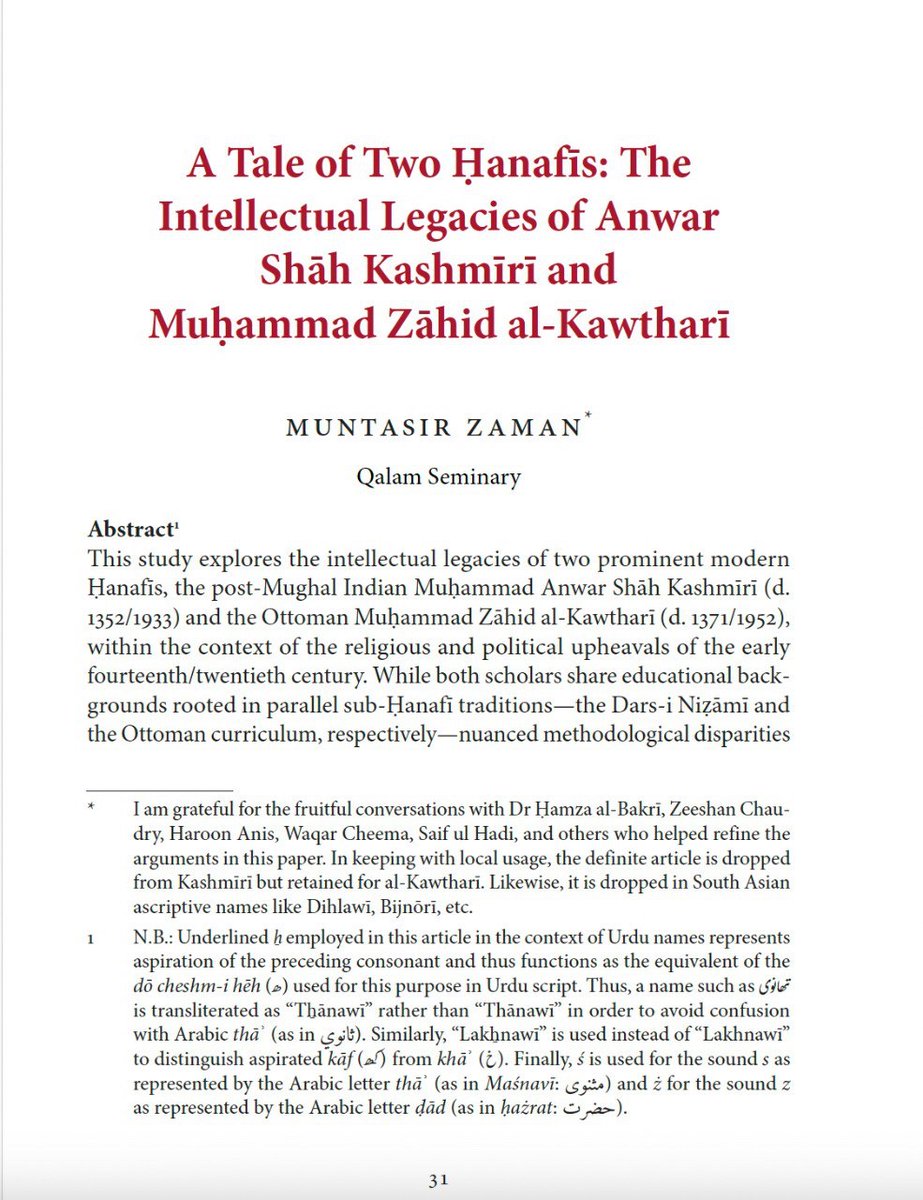
Hadith Notes
@hadith_notes
Hadith Studies | Arabic Manuscripts | Translations of Classical Islamic Literature | The Bukhārī Project | Instructor @qalaminstitute
ID: 700550649
https://qalaminstitute.academia.edu/MuntasirZaman 03-10-2013 17:50:10
342 Tweet
10,10K Takipçi
0 Takip Edilen














To date, the most rigorous study on Imām al-Bukhārī’s life and the compilation of his Ṣaḥīḥ is Aḥmad al-Aqṭash’s Qiṣṣat Ḥayāt al-Bukhārī (Aḥmed ElAḳṭash أحمد الأقطش). I reviewed the book for AJIS, covering its strengths, highlights, and limitations. ajis.org/index.php/ajis…


My paper “A Tale of Two Ḥanafīs,” recently published in the Journal of Hanafi Studies, compares the intellectual legacies of Anwar Shāh Kashmīrī (d. 1933) and Zāhid al-Kawtharī (d. 1952) across six disciplines. You can obtain a copy of the journal from Journal of Hanafi Studies


Just received a copy of the Maṭbaʿ-i Niẓāmī edition of Sunan al-Dārimī, the very first lithographic printing of the work published in Kanpur in 1876. Hard to wrap my head around the fact that this copy is now a century and a half old. Thanks to Uwais Namazi for the gift!



















